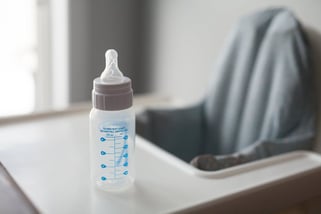Reality Alert: It was a busy day in the infant room at a respected and well-known childcare center. Two teachers were working hard to keep eight babies fed and happy. In her haste, one of the teachers accidentally grabbed the wrong breast milk and fed it to an infant. When asked later, she would explain that the handwriting on the wrong bottle looked very similar to the handwriting on the correct bottle belonging to the infant’s mother. Both mothers were understandably upset and the center paid for medical tests to ensure there was no transmission of illnesses or bloodborne pathogens.
Caring for infants is challenging in many ways. One challenge is keeping all the bottles and milk containers organized. Clearly, feeding a child the wrong breast milk is a problem, but even mixing up formula bottles can be an issue if one child has an allergy. Centers often have parents label their child’s bottles, which can lead to mix-ups like the story above. Labels may fall off or the parents may have illegible handwriting. It’s safer for centers to develop and use their own method for labeling bottles and milk containers.
Infant Milk Labeling Ideas
One way a center could easily implement a labeling system is to use computer-generated labels. Each evening a teacher prints off enough pre-made labels for the next day. Then, as children are dropped off, the teacher can easily stick a label on each of their bottles. Parents would need to add the date and time the milk was expressed if the bottles contain breast milk. This system eliminates the problem of illegible handwriting.
Another system that makes bottles easily distinguishable is to use colored labels. Teachers assign each child a color and then neatly print bottle labels each night. Avoid cursive handwriting, as this can be hard to read. Again, parents would have to add information about the breast milk. Teachers can then create a chart with each child’s bottle color and post it on the refrigerator in the classroom. This way, even if a substitute or new teacher is working, they will easily be able to select the correct bottle for the correct child.
Labeling Tips
- If creating labels by hand, use a moisture-resistant ink to label the bottles.
- Use the baby’s full name.
- Ensure the label is secure on the bottle and won’t fall off.
- Apply the label in such a way that it’s easily seen.
- Inspect and double-check the label before feeding the milk to a child.




